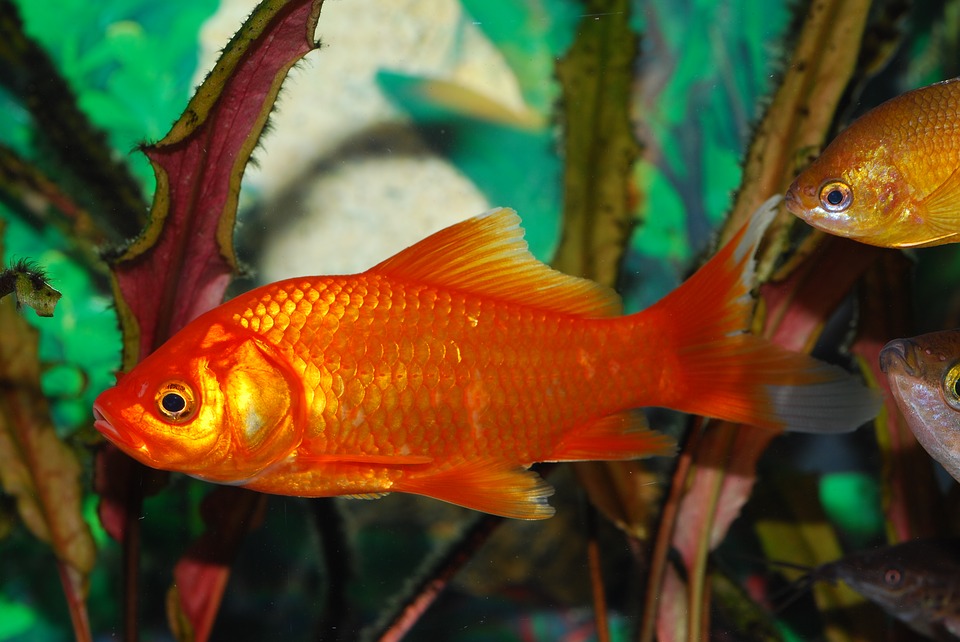Like every living thing, fish need food to survive, but they also have particular requirements to live a healthy and long life.
Unfortunately, some fish keepers do not read or comprehend the nutritional information on fish food container labels. As a result, they may not have been providing nutritionally enough food. It’s critical to understand what the info on the label represents and if the meal has the nutrients, your fish requires to keep healthy.
If live items are a comprehensive source of nutrition for predatory fish, they must be provided with a nutritious diet. Living flies, crickets, and worms don’t have nutritional information, so they’re an even more considerable uncertainty. Feeding your fish the proper live meals, on the other hand, can increase their health and stimulate reproductive activity.

Ingredients
On the fish food label, the ingredients needed to produce the cuisine will be listed on the containers. They are listed in order of most significant percentage in the food to lowest concentration. For carnivorous fishes, look for food with the first few components listed as fish, shrimp, other seafood, and algae or vegetable herbivores. Grain content in aquarium fish diet should be kept to a bare minimum.
A Guaranteed Analysis, which includes the amounts of protein, fat, carbohydrate, fiber, vitamins, and minerals in the product, should also be included on the label. A high percentage of highly digestible and necessary amino acids & fatty acids, vitamins, and minerals may be found in high-quality foods. The price of food mainly relies on its content.
Fats
Low-fat fish diets are recommended. Even meat-eating fish must consume a maximum of 8-10 percent fat in their diet. Plant eaters require no more than 3-5 percent fat in their diet. Excess fat damages the liver, resulting in illness and premature mortality.
Fish have trouble processing hard (saturated) fats like those found in beef; therefore, the kind of fat matters. Saturated fats are very dangerous and should be avoided. The most digestible fats (oils), such as those found in brine shrimp, are polyunsaturated fats (oils), which are particularly effective for training fish for breeding. The meal must contain the critical Omega-3 and Omega-6 fatty acids for proper fish growth.
Carbohydrate
Carbohydrates are not required in the diet of fish. Because fish cannot absorb carbohydrates as quickly as terrestrial animals, too many carbs might stifle normal development. However, the number of carbohydrates a fish may handle without experiencing detrimental side effects varies by species.

The majority of the carbohydrate in a fish meal is in the form of starch. The main risk of feeding increased carbohydrate percentages is the resultant drop in all other vital elements in the diet. This is especially true in juvenile fish, which require a lot of protein to develop properly. On the other hand, adult fish appear to be able to take up to 40% carbohydrate in their diet without negative consequences, while 25% is preferable.
Fiber
A tiny amount is required to help with digestion, but not much. Carnivores do not digest fibers well, so they should only make up 4 % of their diet compared to herbivores, who need 5-10 % fiber in their diet.
Protein
The amount of protein you should feed your fish depends on the fish species. Protein is the most expensive part of a fish diet, so if you find cheap protein, know it is not good quality. Young fish’s diet should contain at least half protein ( 50 %) for good development. Herbivores need 15 to 30 percent, while carnivores need a minimum of 45 percent.
A fish diet is very important compared to what everyone thinks. Let us know in the comments if you want to read more about fish nutrition…

1 thought on “Your Best Guide To Fish Food Nutrition and Vitamins 101”